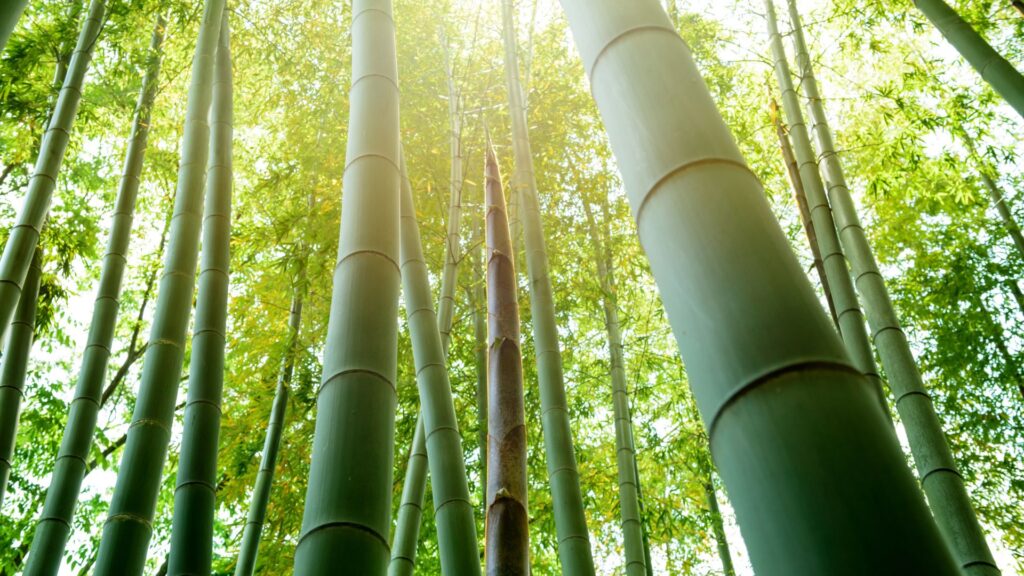Is Bamboo Clothing Sustainable? The Hype and Controversy. Exploring the complex story of bamboo clothing, from farming to production, everything you need to know.
What is Bamboo Clothing?
To answer whether bamboo clothing is sustainable, we must first understand what ‘bamboo clothing’ actually means. Most yarn generated from bamboo does not contain bamboo in the finished product. Instead, bamboo provides a source of cellulose fiber, which can be substituted with other plants to create a similar end product through the same industrial process.
Bamboo clothing is typically made from reconstituted bamboo fiber, commonly known as viscose. When manufacturers claim a product is ‘made of bamboo’ or ‘100% bamboo,’ it usually means it’s made of viscose derived from bamboo. This has led to legal controversies, as seen in the US and the European Union, where labeling guidelines prevent bamboo from being listed as a legitimate constituent of any garment while viscose can be.
Understanding this distinction is crucial to evaluating bamboo clothing’s sustainability. We need to assess the environmental impact of growing bamboo and how bamboo farming compares with other sources used for making viscose. Additionally, we must understand viscose production itself, how it’s made, and its environmental impact.
Making Viscose: A Chemical Process
Viscose is a man-made cellulose fiber, not entirely natural like cotton or wool, nor entirely synthetic like nylon or polyester. The process involves cooking and crushing cellulose plant fibers in strong chemical solvents, such as sodium hydroxide (caustic soda). The resulting alkali cellulose is dried, ground to a powder, and treated with carbon disulfide to form sodium cellulose xanthate. This is then dissolved in dilute caustic soda to create a spinning solution called viscose.
This chemically intensive process poses significant environmental hazards. Sodium hydroxide and carbon disulfide can cause serious health issues and environmental damage. However, innovations in viscose production, such as closed-loop processes pioneered by companies like Lenzig, aim to minimize these impacts. Lenzig’s EcoVero product, for example, is FSC certified and meets EU ecolabel standards.
The Lyocell process, used to create Tencel®, is also promising. It uses non-toxic amine oxide to dissolve cellulose fibers, allowing for 99.5% chemical reuse. Although energy-intensive, this process significantly reduces environmental harm compared to traditional viscose production.
Despite the chemical intensity of viscose production, the final product does not retain these harmful chemicals, often earning Oeko-Tex 100 certification. Additionally, viscose is 100% biodegradable and requires significantly less water and dye than conventional cotton, further reducing its environmental footprint.
Is Bamboo Sustainable: Farming and Cultivation
Bamboo is widely praised for its sustainability, but is it as eco-friendly as claimed? Bamboo’s unique qualities include its widespread growth, adaptability, and natural antimicrobial properties. It’s the fastest-growing plant on the planet, with some species growing up to 910mm in 24 hours.
The Moso bamboo species, crucial for the textile industry, grows rapidly and efficiently. Moso bamboo plantations can yield double the amount of timber per acre compared to pine, making it an excellent source for viscose production. Sustainable harvesting practices, which avoid clear-cutting and promote ecosystem stability, further enhance its environmental benefits.
Bamboo requires little to no irrigation, thriving in wet subtropical climates and maintaining stable ecosystems. Its extensive root system prevents soil erosion and subsidence, making it a more sustainable option than many other crops.
Bamboo and CO₂
Bamboo is touted for its carbon-fixing abilities. Studies suggest bamboo is 2 to 4 times more effective at fixing carbon than fir or pine plantations and reaches its maximum carbon storage capacity in less than 10 years. However, the environmental benefits depend on proper farming practices. Intensive farming can stretch ecosystems beyond natural limits, underscoring the importance of good management.
Complications and Socioeconomic Pressures
Increased demand for bamboo has led to some negative practices, such as the clearing of mixed forests for bamboo plantations and the creation of monocultures. These practices can harm biodiversity but also highlight the need for responsible farming and regulation.
On the positive side, bamboo’s popularity has provided economic benefits to rural communities in China, Southeast Asia, India, Africa, and South America. Sustainable bamboo farming supports millions of livelihoods worldwide.
A Balanced View on the Sustainability of Bamboo Clothing
The sustainability of bamboo clothing is complex. Viscose production has both attractive sustainable properties and significant environmental challenges. While bamboo is not the wonder plant some claim, it offers a promising raw material for viscose production, especially compared to conventional cotton, which is more environmentally harmful.
Consumers can make a difference by choosing products like Tencel® or EcoVero, supporting brands that ensure transparent and responsible production practices. With continued innovation and responsible farming, bamboo clothing can fulfill its promise of sustainability.
Conclusion: Is Bamboo Clothing Truly Sustainable?
In summary, bamboo clothing is not a clear-cut solution but offers significant sustainability benefits when managed correctly. The production of viscose from bamboo presents environmental challenges, but innovations and responsible practices are paving the way for a more sustainable future in the textile industry. Consumers have the power to drive this change by making informed choices and supporting ethical brands.
For more detailed insights, you can explore articles from Ethical Clothing, Greener Ideal, Sustainably Kind Living, My Green Closet, and Eco-Stylist.
This article was prepared in collaboration with Ben Heikel , Co-founder @ ethical-clothing.com based on the article “Is Bamboo Clothing Sustainable, The Hype And Controversy” written by Jack at Ethical Clothing.

